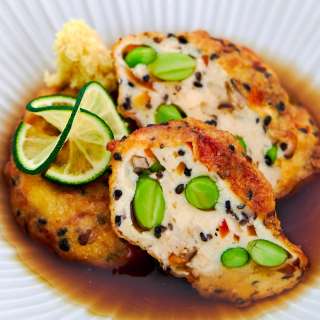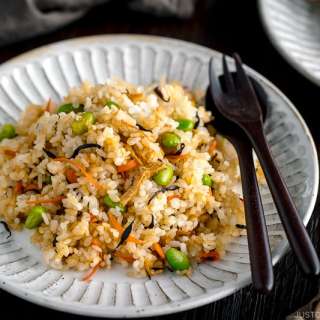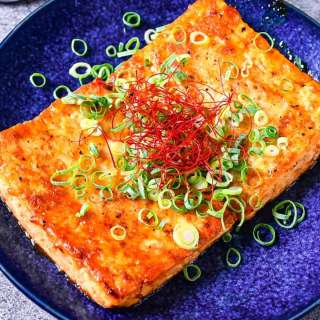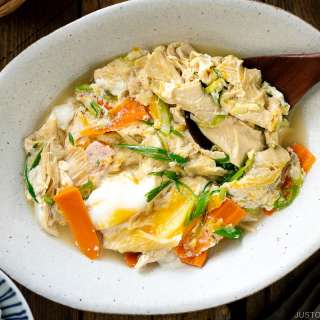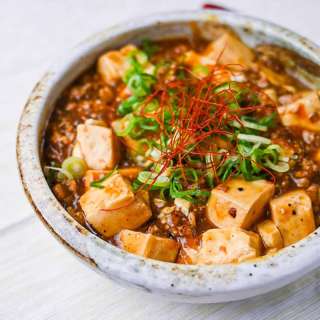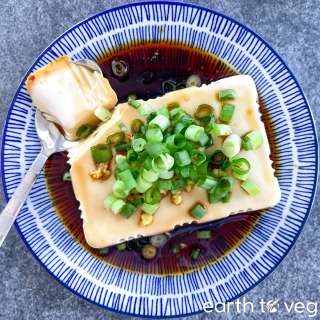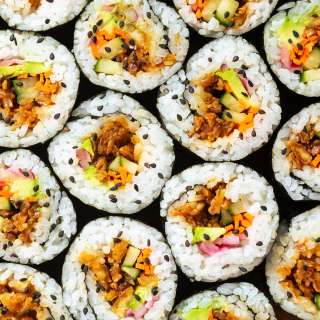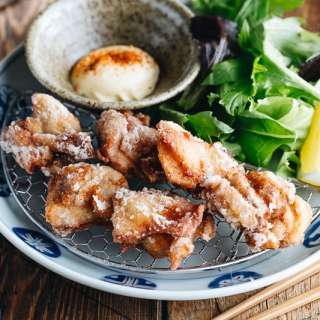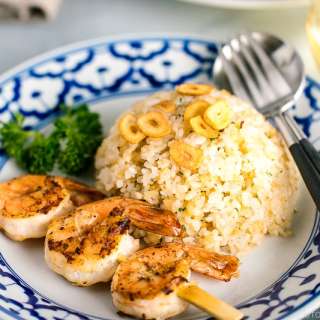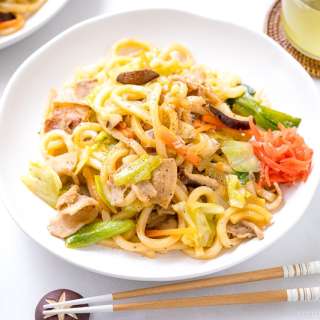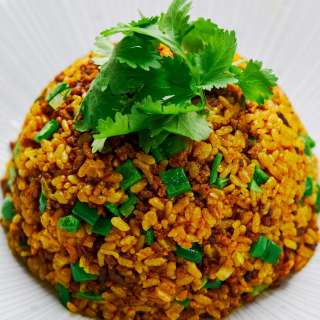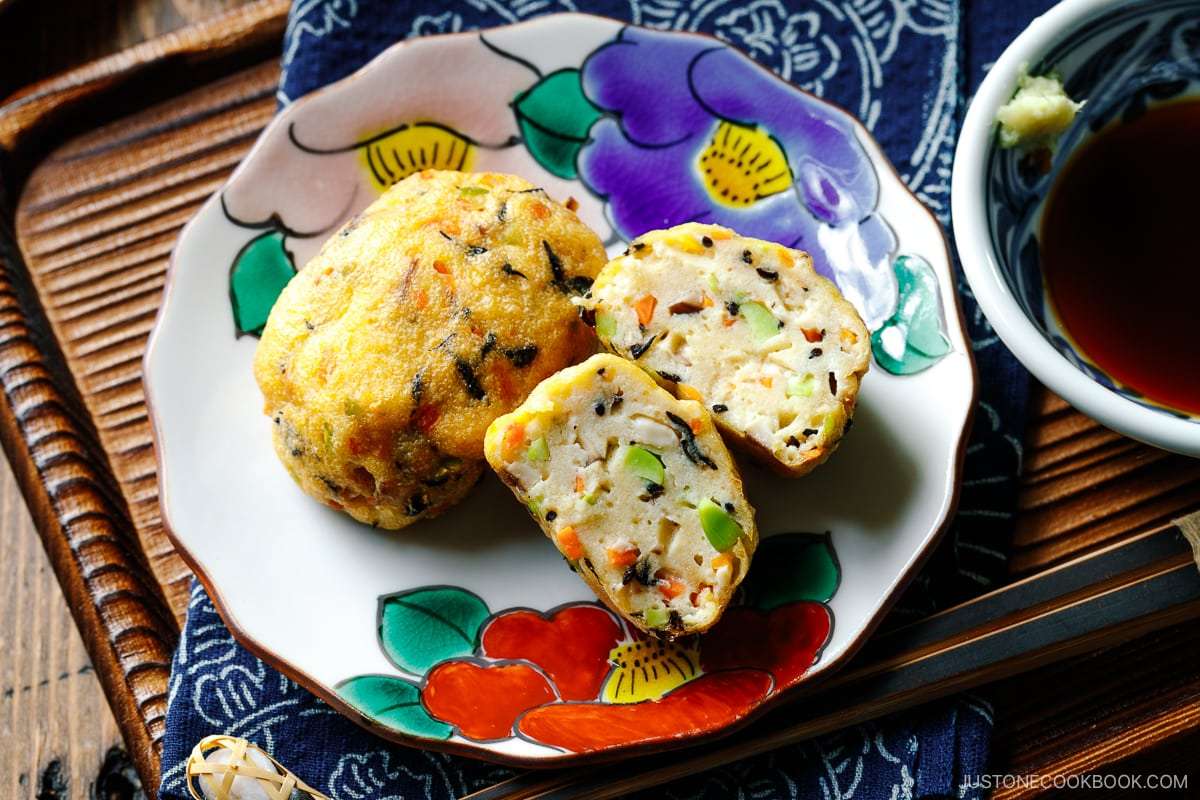
Ganmodoki (Japanese Fried Tofu Patties)
User Reviews
4.8
18 reviews
Excellent
-
Prep Time
20 mins
-
Cook Time
20 mins
-
Additional Time
2 hrs
-
Total Time
40 mins
-
Servings
11 pieces
-
Calories
70 kcal
-
Course
Main Course
-
Cuisine
Japanese

Ganmodoki (Japanese Fried Tofu Patties)
Report
Originally created as shojin ryori (Buddhist vegan cuisine), Ganmodoki are delicious Japanese fried tofu patties with hijiki seaweed, shiitake, and edamame. Crispy on the outside yet soft and fluffy inside, freshly made ganmodoki are irresistible! {Vegan Adaptable}
Share:
Ingredients
- 1 medium-firm tofu (momen dofu) (14 oz, 397 g)
- 1 inch carrot (use the thick top part; 1 oz, 30 g)
- 4 Shiitake mushrooms (medium)
- 1 oz shelled edamame (about 3 Tbsp, cooked)
- 1 Tbsp dried hijiki seaweed (0.1 oz, 3 g; I used the small, soft “buds“ of the hijiki plant called mehijiki (芽ひじき); you can use the long, chewy “stems” called nagahijiki (長ひじき) as well)
- 1 large egg (50 g each w/o shell) (skip for vegan and substitute 1¾ oz, 50 g of mountain yam called nagaimo/yamaimo)
- ½ tsp Diamond Crystal kosher salt
- 2 Tbsp potato starch or cornstarch
- neutral oil (for greasing your hands and deep-frying)
For Serving
- ginger (grated, with juice)
- soy sauce
Instructions
- Before You Start: Please note that this recipe requires draining the tofu for 2–4 hours, depending on the method you use (see the next step). Now, gather all the ingredients.
To Drain the Tofu
- Press 1 medium-firm tofu (momen dofu) to drain the liquid very well. You can either press it for 2 hours with a tofu press (I use one and love it), or drain it for 4–6 hours under a heavy object (the old-fashioned way).
- For the traditional method, wrap the tofu block with a paper towel or tea towel. Place it on a plate or tray. Then, put another plate or tray on top of it. Add a heavy item, like a can of food or a marble mortar, on top to apply pressure. Let it sit for 4–6 hours. Tip: The weighted item should be heavy enough to press out the liquid, but not so heavy that it crushes the tofu.
To Mince the Vegetables
- Peel 1 inch carrot and slice into thin slabs. Cut the slabs into thin sticks, then mince them. Rock your knife back and forth through the pieces to mince finely. This way, they will bind together with the tofu mixture. If the vegetables are too chunky, the patties will break apart when you handle or deep-fry them. Tip: If you want to substitute the carrots with dense root vegetables like lotus root or burdock root that are not edible raw, make sure to blanch or microwave them first until crisp-tender (al dente).
- Remove and discard the stems of 4 shiitake mushrooms. Thinly slice the caps, then mince them finely.
- Peel off and discard the thin outer skin of 1 oz shelled edamame. Then, finely chop the edamame.
- Place the carrots, mushrooms, and edamame in a large bowl. Add 1 Tbsp dried hijiki seaweed.
To Mash the Tofu
- After pressing the tofu, pass it through a fine-mesh sieve (uragoshi-ki) into a clean plate for a very smooth consistency. Use a spatula to help mash it through the strainer. You can also use a food processor.
- Add the mashed tofu to the bowl with the vegetables.
To Combine the Tofu Mixture
- Beat 1 large egg (50 g each w/o shell). Add half of the beaten egg to the bowl with the tofu. (For vegan, skip the egg and use nagaimo instead; see Step 3 below.)
- Mix the egg, tofu, and vegetables until well combined. Now, check the consistency. If it‘s too wet and soft to form a patty, don‘t add the rest of the egg. If not, add the rest of it.
- Vegan option: Skip the egg. Instead, peel and grate 1¾ oz, 50 g of mountain yam (nagaimo/yamaimo). Add half of it to the tofu mixture and check the consistency before adding the remaining grated nagaimo.
- I added just a little bit of nagaimo.
- Mix well. Add 2 Tbsp potato starch or cornstarch and ½ tsp Diamond Crystal kosher salt and combine thoroughly.
To Form the Patties
- Roughly divide the tofu mixture into 10 portions. Alternatively, you can use a large cookie scoop to portion the patties as you go.
- Grease both palms with some neutral oil. Then, scoop one portion of the mixture into your hand.
- Shape it into an oval patty. Place it on a tray. Continue making patties with the rest of the mixture.
To Cook the Ganmodoki
- To a medium-sized pot, add neutral oil to a depth of 1–1½ inches (2.5–3.5 cm). Heat over medium heat until the oil reaches 320ºF (160℃).
- Check the oil temperature with an instant-read thermometer or by sticking wooden chopsticks into the oil. If you see small bubbles forming around the tips, the oil is ready. When it reaches 320ºF (160℃), add the tofu patties in batches. Based on my pot‘s size, I added four patties per batch. Do not add too many at once, and maintain the right temperature at all times. Tip: Do not crowd the pot because the oil temperature will drop quickly. Your patties should take up no more than half of the oil surface area at any one time. For more helpful hints, read my post on how to deep-fry food.
- Fry the patties until golden, about 5–6 minutes, flipping halfway through.
- Once a golden color, remove the Ganmodoki from the oil. Transfer them to a wire rack or paper towel to drain the excess oil.
- Continue with the next batches until you‘ve fried all the patties.
To Serve
- Grate the ginger (I use the motoshige brand grater here but always use this ceramic grater). Pour soy sauce into individual small plates for dipping and add some grated ginger to taste. Dip the hot Ganmodoki in the sauce and enjoy!
To Store
- Transfer the leftovers to an airtight container and let cool completely. Keep them the refrigerator for up to 3 days or in the freezer for up to a month. You can thaw frozen Ganmodoki in the refrigerator overnight. If you’re adding it to Oden (Japanese Fish Cake Stew) or Simmered Ganmodoki, you can use it directly from frozen.
How to Reuse or Dispose of the Oil
- The oil used to fry Ganmodoki is usually clean enough to reuse, if you wish. First, let the oil cool completely. Then, use a fine-mesh strainer or coffee filter to strain the oil into a glass container. Label it with the date and store in a cool, dark place. Reuse it within 2-3 weeks. Dispose of it sooner if the oil turns rancid (looks cloudy, starts to foam, or has a foul odor).
- To dispose of your frying oil, please follow your local guidelines. In my neighborhood, the local recycling center accepts used cooking oil. To use Japanese oil solidifier, add the powder to the hot oil and mix well. Set it aside to solidify as it cools (this may take overnight). Cut it into small pieces and discard in the trash.
Nutrition Information
Show Details
Calories
70kcal
(4%)
Carbohydrates
3g
(1%)
Protein
4g
(8%)
Fat
5g
(8%)
Saturated Fat
1g
(5%)
Polyunsaturated Fat
3g
Monounsaturated Fat
1g
Trans Fat
0.02g
Cholesterol
17mg
(6%)
Sodium
63mg
(3%)
Potassium
53mg
(2%)
Fiber
1g
(4%)
Sugar
0.5g
(1%)
Vitamin A
481IU
(10%)
Vitamin C
0.4mg
(0%)
Calcium
52mg
(5%)
Iron
1mg
(6%)
Nutrition Facts
Serving: 11pieces
Amount Per Serving
Calories 70 kcal
% Daily Value*
| Calories | 70kcal | 4% |
| Carbohydrates | 3g | 1% |
| Protein | 4g | 8% |
| Fat | 5g | 8% |
| Saturated Fat | 1g | 5% |
| Polyunsaturated Fat | 3g | 18% |
| Monounsaturated Fat | 1g | 5% |
| Trans Fat | 0.02g | 1% |
| Cholesterol | 17mg | 6% |
| Sodium | 63mg | 3% |
| Potassium | 53mg | 1% |
| Fiber | 1g | 4% |
| Sugar | 0.5g | 1% |
| Vitamin A | 481IU | 10% |
| Vitamin C | 0.4mg | 0% |
| Calcium | 52mg | 5% |
| Iron | 1mg | 6% |
* Percent Daily Values are based on a 2,000 calorie diet.
Genuine Reviews
User Reviews
Overall Rating
4.8
18 reviews
Excellent
Other Recipes
